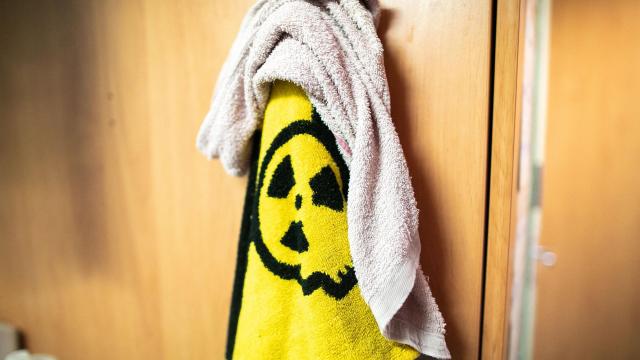Scattershot budgets, lack of coordination, stalling research and development, and rapid worker turnover are threatening the Department of Energy’s ability to sufficiently store and secure the nation’s ever-growing trash bin of toxic nuclear waste.
Those were some of the top concerns outlined today by experts and lawmakers during a congressional hearing probing the country’s nuclear waste cleanup response. The hearing, carried out by the House Committee on Science, Space, and Technology, specifically interrogated a series of Government Accountability Office reports highlighting potential deficiencies within the DOE’s Office of Environmental Management (EM).
The DOE’s EM office is responsible for the Herculean task of securing and cleaning up the country’s still-growing excesses of radioactive nuclear waste produced as a byproduct of nuclear weapons research and production dating back to World War II. Those diverse cleanup efforts can vary from addressing contaminated ground soil and groundwater, to decommissioning contaminated facilities, and building facilities to treat radioactive waste. That’s a challenging task under the best circumstance, and the office certainly isn’t operating at its best, according to the GAO.
One of the 2021 GAO reports found growth in DOE’s environmental waste liabilities and overall costs related to addressing cleanup have outpaced how much the agency spends on cleanup. A separate GAO report released that same year found the DOE had reduced research and development funding crucial for discovering new, undiscovered ways to reduce all that nuclear waste. While throwing more funding at the agency might sound like the most obvious answer to that second problem, GAO Natural Resources, and Environment Director Nathan Anderson wasn’t so sure when probed by lawmakers. Large chunks of DOE R&D money, he said, simply aren’t trackable.
“We asked the sites, we asked the labs what [money] was spent and there was a breakdown of internal controls at that point,” Anderson said.
Part of those budgeting inconsistencies, Anderson suggested, could potentially be addressed by centralizing and prioritising the pot of R&D funds already available to DOE. Anderson was directly involved in the GAO report, which determined the DOE as a whole simply lacks a “comprehensive approach to prioritising cleanup R&D.” That deficiency apparently led individual sites to develop their own approaches largely independent of one another. During a head-scratching moment, EM Senior Advisor William White admitted the office had just recently come up with a common definition of R&D.
“Before I make the case that more money is needed, let’s look at what they did with what they had,” Anderson said during the hearing.
In some cases, waste cleanup teams handling extremely hazardous materials appeared woefully under-equipped. Dr. John Plodinec, who serves as the Vice Chair for the Committee on the Independent Assessment of Science and Technology for the Department of Energy’s Defence Environmental Cleanup Program, described personally seeing clean-up sites where “a first class job was being done using third class technology.” In response to those apparent deficiencies, Plodinec advocated for improved robotics and advanced monitoring systems that he says could reduce worker contact with harmful materials. Those advancements also have the knock-on side effects of cutting costs.
“Robots don’t need time off,” Plodinec said. “Since they don’t have a breathing apparatus they can work six-hours instead of two or three at a time.”
Issues around nuclear waste safety don’t simply cease to exist once the dangerous materials are secured underground either. Several of the speakers Wednesday expressed concerns that escalating environmental disturbances arising from climate change could potentially force the EM to reconsider some of its models around proper waste storage. What happens, for example, when an area selected to store hazardous materials is actually unearthed and made unviable due to climate change effects? Anderson said models made accounting for weather patterns 20 years ago may not accurately reflect the realities of climate impacts today.
There are also human issues challenging the office, or more specifically, a lack of humans. Earlier this year, the GAO released another report suggesting the EM office was beset by a wave of quick turnover that, if unaddressed, could hinder its ability to meet cleanup obligations and address long-term missions. Anderson expanded on that issue during the hearing, saying somewhere between a third and half of EM’s workforce are expected to retire in the next five years, which he described as a “significant gap that will need to be addressed in the near future.” White addressed some of the concerns, saying cleanup sites are working with universities and school systems to bring in more talent.
If it feels slightly odd that laborious budget constraints and bureaucracy are threatening the operations of an agency responsible for leaking cancerous materials out of the Earth, just remember it’s America baby!
